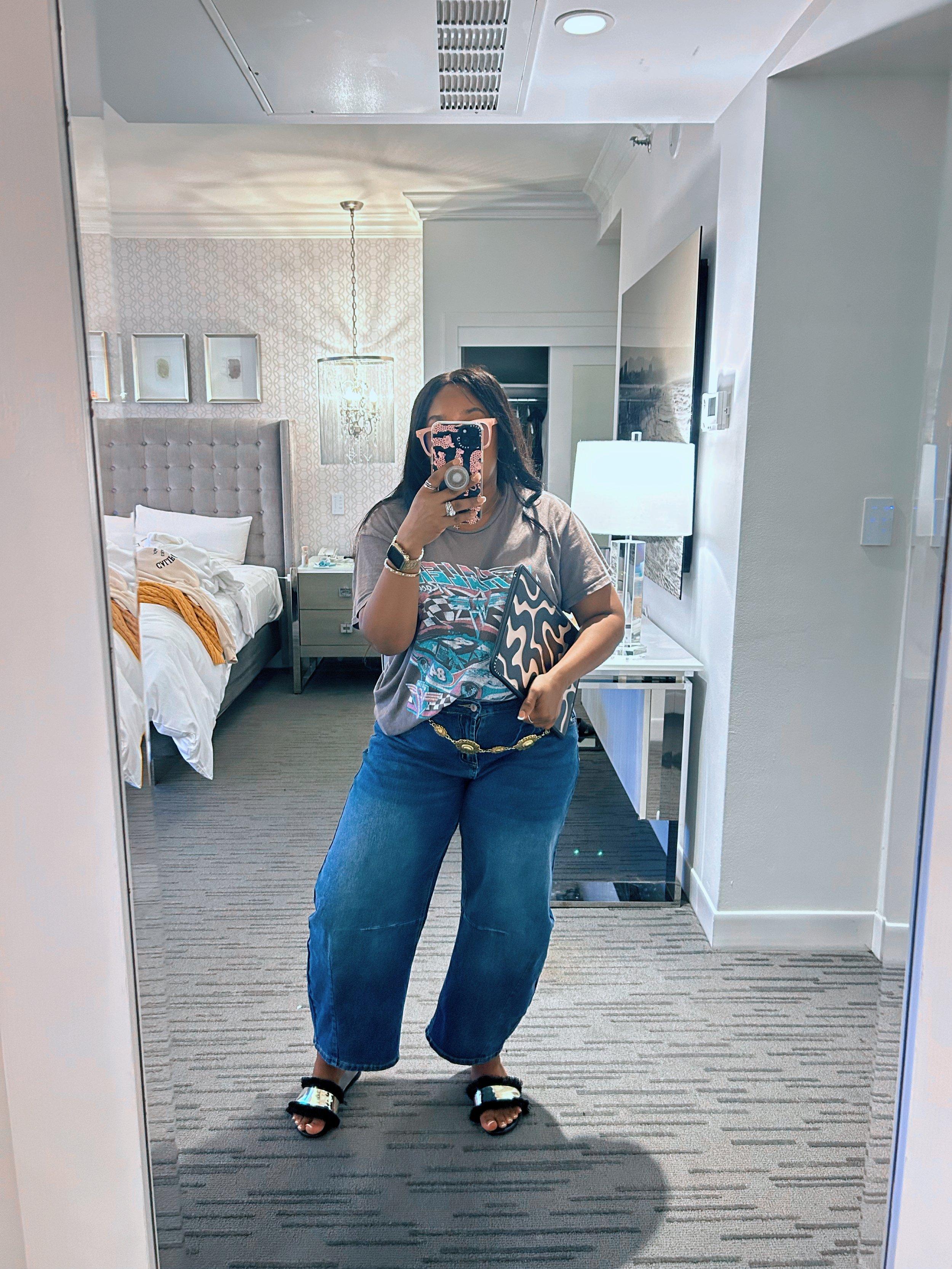5 Tips for Organizing Your Closet With A Spreadsheet
You know that feeling when you're standing in front of your closet every morning, trying to find the perfect outfit but can't seem to figure it out? Yeah, I've been there too. That’s exactly why I created a Wardrobe Inventory Spreadsheet. What I love about this awesome tool is that it can help you sort out your clothes, plan outfits with ease, and keep a functional closet that truly represents your personal style. That wardrobe inventory whisperer is part of our premium wardrobe management system Wardrobe Whisperer, but I’m giving you a small little taste of how it works. Of course it doesn’t come with all of the bells and whistles. So, let's chat about five essential tips to make the most of the Wardrobe Inventory Spreadsheet and turn your closet into a well-organized paradise.
How to Declutter Your Home Fast: Tips From Our Experts | ApartmentGuide
Tip 1: Categorize Your Clothing Items
Organize by Type, Season, and Occasion
The first step towards a beautifully organized closet is to categorize your clothing items by type, season, and occasion. Think of it as creating a "wardrobe map" that guides you through your collection with ease. For instance, group tops, bottoms, and dresses together, then further sort them by season (spring, summer, fall, or winter) and occasion (casual, formal, or work). This structured approach will make it a breeze to find the perfect outfit for any event.
The Importance of Proper Categorization
Proper categorization is the foundation of an effective wardrobe management system. When your clothing items are neatly sorted and grouped, you can quickly assess your collection and identify any missing pieces or overabundant categories. This clarity enables you to create well-balanced outfits and make targeted purchases that enhance your overall wardrobe versatility.
Tip 2: Input Detailed Information for Each Item
Record Brand, Size, Color, and Style
As you categorize your clothing items, take the time to input detailed information about each piece into the Wardrobe Inventory Spreadsheet. This includes the brand, size, color, and style of every item in your collection. By capturing this data, you'll gain valuable insights into your style preferences and be better equipped to make informed decisions when shopping for new pieces.
Benefits of a Comprehensive Inventory
Having a comprehensive inventory of your wardrobe offers numerous advantages. For one, it simplifies your decision-making process when shopping, helping you avoid impulsive purchases or duplicates. Moreover, a complete overview of your clothing items enables you to make the most of your existing wardrobe, encouraging creativity in outfit planning and ensuring that no piece goes unworn. Ultimately, a detailed inventory is a powerful tool for refining your personal style and maximizing the efficiency of your closet.
Tip 3: Use the Spreadsheet to Plan Outfits and Track Ideas
Create Outfit Combinations for Various Occasions
The Wardrobe Inventory Spreadsheet is not just a tool for organization—it's also your personal stylist, helping you to create an array of outfit combinations suitable for a variety of occasions.
1. Understand your inventory: Begin by familiarizing yourself with the items in your spreadsheet. Look at the pieces you have and the categories they belong to—this will give you a clear picture of your wardrobe's current state.
2. Identify the occasion: Next, consider the type of event or occasion you're dressing for. Is it a casual day out, a business meeting, or a formal dinner? The occasion will guide your selection process.
3. Create your combinations: Start by choosing a central piece, such as a dress or a pair of pants. Then, select complementary items like tops, jackets, shoes, and accessories from your spreadsheet. Experiment with different pieces and color schemes. Remember, there's no hard and fast rule—this is your chance to let your creativity shine!
4. Use the Outfit Planner: With the Wardrobe Whisperer, each item added to your Wardrobe Inventory Spreadsheet automatically populates into the Outfit Planner. This tool allows you to visually mix and match your pieces, making the process of creating combinations easier and more intuitive.
Record and Track Your Favorite Outfits
Once you've put together an outfit you love, it's crucial to save that combination for future reference. This will make getting ready for repeat occasions a breeze, and over time, you'll build a collection of 'go-to' ensembles tailored to your personal style. Here's how to do it:
Create an outfit record
In your spreadsheet, dedicate a section for recording your favorite outfits. Note down the pieces that make up the ensemble, and specify the occasion it's suitable for.
Capture your look
If you're a visual person, consider taking a quick snapshot of you wearing the outfit or of the outfit laid out. This will provide a visual reference that can help spark inspiration when you're in a style rut.
Track your outfit's performance
Each time you wear an ensemble, make a note of any compliments you received or how you felt wearing it. This feedback can provide valuable insights into what works best for you, helping you refine your style over time.
Tip 4: Perform Regular Wardrobe Assessments
A comprehensive wardrobe assessment is key to maintaining a versatile and functional collection. By scheduling regular updates and rotations, as well as identifying gaps or redundancies in your wardrobe, you can create a closet that truly reflects your style and needs. Let's delve into the details:
Schedule Seasonal Updates and Rotations
1. Mark your calendar: To ensure you don't overlook this vital task, mark your calendar with a reminder to conduct a wardrobe assessment at the start of each season. This will give you the opportunity to evaluate the state of your wardrobe and make any necessary adjustments.
2. Rotate your wardrobe: As the seasons change, so do your clothing needs. During the assessment, rotate your wardrobe by storing off-season items and bringing forward the pieces that are appropriate for the current season. This will make it easier to find and access the items you need, and it can also prolong the life of your clothes by reducing wear and tear.
3. Stay up-to-date with trends: While it's essential to have a wardrobe that reflects your unique style, keeping an eye on current fashion trends can help you stay fresh and modern. Take note of any new styles, colors, or silhouettes that resonate with you and consider incorporating them into your wardrobe during your seasonal assessment.
Identify Gaps or Redundancies in Your Wardrobe
1. Analyze your inventory: Using the Wardrobe Inventory Spreadsheet, analyze the current state of your wardrobe. Look for any gaps or redundancies by assessing the balance between various categories, such as the number of tops compared to bottoms, or the ratio of casual to formal items.
2. Identify essential pieces: Determine if you're missing any essential pieces that can elevate your wardrobe. These might include versatile basics like a white button-down shirt, a little black dress, or a well-tailored blazer. Identifying these gaps will help you make targeted purchases that add value to your collection.
3. Address redundancies:If you notice any redundancies in your wardrobe, such as multiple items serving the same purpose, consider decluttering. Evaluate the quality, fit, and condition of each piece, and keep only the best one. Donate, sell, or recycle the rest to make room for more versatile and functional items.
4. Evaluate your lifestyle needs: Assess whether your current wardrobe meets your lifestyle needs. Consider factors such as your occupation, hobbies, and social activities, and ensure your clothing collection aligns with these aspects of your life. If you identify any mismatches, adjust your wardrobe accordingly to better serve your daily requirements.
Tip 5: Maintain and Update Your Wardrobe Inventory Spreadsheet
Repair, Repurpose, or Donate Items as Needed
1. Repair items: Regularly inspect your wardrobe for any items that require mending or maintenance, such as missing buttons, broken zippers, or loose seams. Repairing these issues promptly will extend the life of your clothing and ensure you always look polished and put-together.
2. Repurpose items: If you have items that no longer serve their original purpose or don't align with your current style, consider repurposing them. For instance, transform an old dress into a skirt, or turn a worn-out t-shirt into a cleaning cloth. Get creative and give new life to your old pieces!
3. Donate or sell:For items that are still in good condition but no longer have a place in your wardrobe, consider donating them to a local charity or selling them through a consignment shop or online platform. This will not only free up space in your closet but also contribute to a more sustainable fashion cycle.
Keep the Spreadsheet Up-to-Date with New Purchases or Changes
1. Update regularly: Whenever you add new items to your wardrobe, remove old ones, or make alterations, update the Wardrobe Inventory Spreadsheet accordingly. This will help you maintain an accurate record of your collection and ensure the inventory remains a useful tool for outfit planning and organization.
2. Schedule periodic reviews: Set a reminder to review your spreadsheet every few months, even if there haven't been significant changes in your wardrobe. This will help you stay familiar with your inventory and ensure any discrepancies are addressed promptly.
Using the Wardrobe Inventory Spreadsheet is an effective way to organize your closet and streamline your daily routine. By categorizing your clothing items, inputting detailed information, planning outfits, performing regular wardrobe assessments, and maintaining your spreadsheet, you can create a functional and efficient wardrobe that reflects your unique style.
Embracing a well-organized wardrobe will not only save you time and energy but also enhance your self-expression and confidence. By investing time and effort into maintaining your Wardrobe Inventory Spreadsheet, you're investing in yourself and your personal style.
The benefits of using the Wardrobe Inventory Spreadsheet for closet organization are clear—it simplifies decision-making, fosters creativity, and promotes sustainable fashion practices. By incorporating these tips into your routine, you'll be well on your way to cultivating a wardrobe that serves you and your unique needs.
Creator Images used for editorial purposes only. All rights belong to their respective creators. We always link and give credit.










